|
Contents
House Bill 1079 Feasibility Study Shows Encouraging Results for Ports-to-Plains Texas Region
Crash Reductions
The results of the HB 1079 Ports-to-Plains Feasibility Study addressing Crash Reductions shows the interstate upgrade would result in a 21 percent annual reduction in crashes across the corridor when compared to the 2050 baseline. The 2050 baseline includes the 2018 highway conditions including the over $443 million of projects planned and programmed over the next ten years. Looking at the individual Segments, the crash reductions over the 2050 baseline would be 4 percent for Segment #1 (remember that Segment #1 already includes the majority of existing Interstate 27); 26 percent for Segment #2; and 29 percent in Segment #3. The benefits listed in this report come by fulfilling the implementation plan fully for the entire corridor. The benefits of the development of the corridor is important to each segment, but do not accrue to any individual segment without completing the entire corridor.
Per USDOT guidelines, these crash reductions are considered in economic terms using standardized values, resulting in a corridor-wide economic benefit of approximately $450 million each year.
Another way to view the Crash Reduction compares the current 2018 data with the improvements provided by the interstate upgrade. This comparison shows a 41 percent reduction. Segments #1, #2 and #3 respectively will see crash reductions from 2018 of 28 percent, 42 percent and 51 percent.
Travel Time Savings
Travel Time Savings include the value of both personal and business travel time and reliability, costs to logistics/shipping companies, and reduction in vehicle operating costs. By increasing speeds on the Ports-to-Plains Corridor, the interstate reduces travel time and expands the regional truck delivery market, or the area reachable within one day assuming an eight-hour operation window, three hours of travel each way, and one hour on either end for loading and unloading. This leads to efficiencies for shippers and makes the Ports-to-Plains Corridor a more attractive business location.
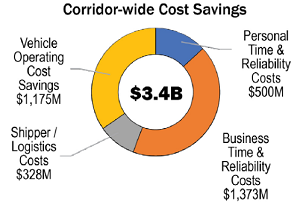 Corridor travel time improvements would also expand the job opportunities available to residents in counties along and adjacent to the Ports-to-Plains Corridor allowing them to reach a wider array of jobs within a one-hour commute, while expanding the labor pool available to businesses. Corridor travel time improvements would also expand the job opportunities available to residents in counties along and adjacent to the Ports-to-Plains Corridor allowing them to reach a wider array of jobs within a one-hour commute, while expanding the labor pool available to businesses.
This enhanced market access enables better job matches and higher businesses productivity, growing the economy.
The faster speeds associated with the interstate upgrade also improve access to international gateways, increasing the ability of companies located along the Ports-to-Plains Corridor to export their goods to Mexico and beyond, and to import critical components and supplies as well as retail goods for household consumption.
When compared to the 2050 baseline, the interstate upgrade reduces average delay more than 89 minutes over the entire Ports-to-Plains Corridor and by 24 minutes along Segment #1; by 26 minutes along Segment #2; and by 39 minutes along Segment #3. The benefits listed in this report come by fulfilling the implementation plan fully for the entire corridor. The benefits of the development of the corridor is important to each segment, but do not accrue to any individual segment without completing the entire corridor.
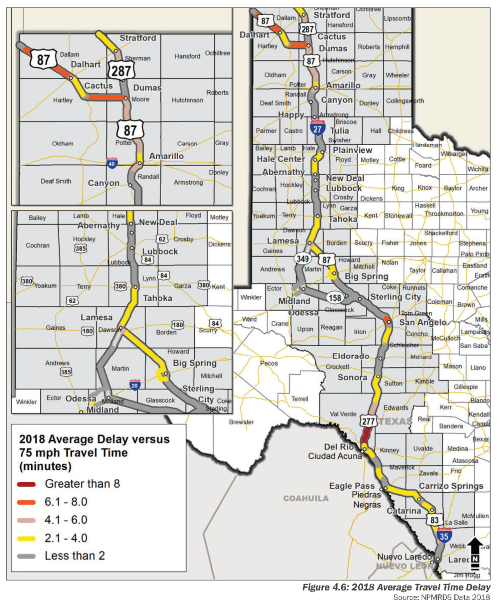
Return to contents
Value of Laredo/Coahuila/Nuevo León/Tamaulipas Region
The Ports-to-Plains Corridor is the primary connection between the Ports-of-Entry of Laredo, Eagle Pass and Del Rio. The following data provides a baseline look from 2017 of the trade in terms of commodity value, commodity weight, transportation mode, and Ports-of-Entry.
2017 Cross-Border Commodity Flows (Laredo/Coahuila/Nuevo León/Tamaulipas Region)
The Laredo/Coahuila/Nuevo León/Tamaulipas border region traded $242.1 billion across the border in 2017. This included $137.6 billion northbound and $104 billion southbound. These amounts represent the twelve most important binational supply chains, encompassing 96% of total traded commodities. The majority of that trade was by truck, followed by rail.
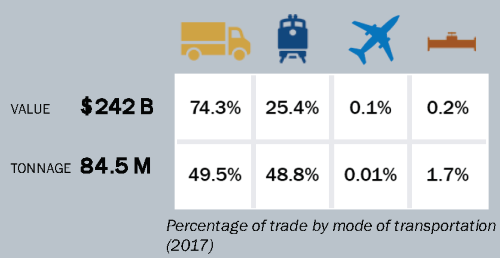
Top Commodities by Value ($) were Parts and Accessories for Motor Vehicles; Motor Vehicles; Freight Vehicles; Telephone Electric Apparatus; and Tractors.
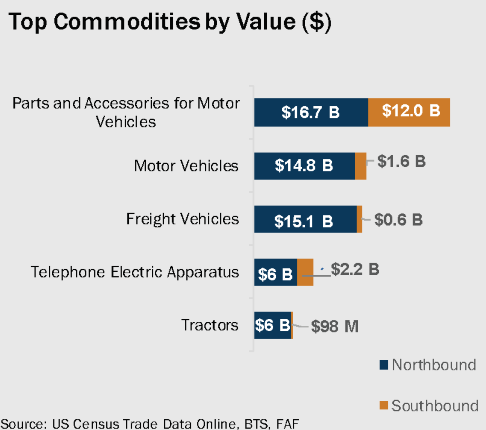
Top Commodities by Weight (tons) were Corn; Non-Crude Oil from Petrol and Bitumen Minerals; Petroleum Gases and Other Gases; Parts and Access for Motor Vehicles; and Coal.
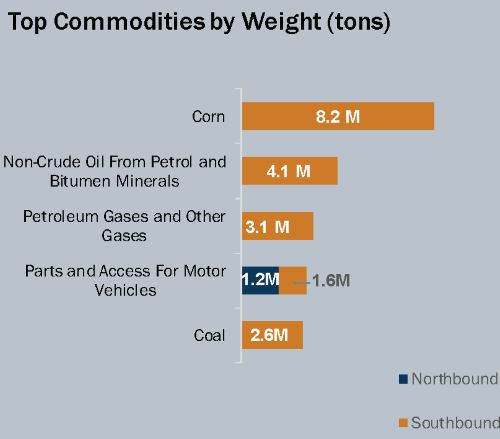
Laredo Port-of-Entry leads the way but Del Rio and Eagle Pass contribute $35.7 billion a year in trade.
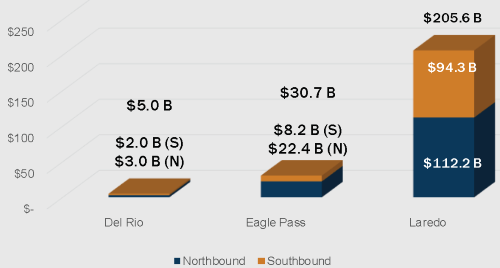
Return to contents
Colorado Diversion Study Finds Investment in Four-Lane Highway Leads to Nearly 1,100 Trucks Diverted Daily from I-25

The Colorado Department of Transportation, Region 4, released findings from the CO-71 Truck Freight Diversion Feasibility Study, which determined the truck reduction on I-25 is 7-9 percent, diverting as many as 1,100 trucks a day, with four-lane divided highway on CO-71.
CO-71 is part of the Heartland Expressway, a congressionally designated High Priority Corridor on the National Highway System. One of the primary goals of the freight analysis study was to determine if,
and what, roadway improvements to CO-71 would attract truck drivers off the heavily congested I-25 front-range corridor of Colorado.
Further, the study showed a positive Benefit-Cost Ratio (BCR). The BCR framework involves defining a Base Case or “No Build” Case, which is compared to the “Build” Case, where the project is built as proposed. In the case of this project, two alternative Build Cases are considered: the “Shoulders with Passing Lanes” scenario, in which passing lanes and shoulders are added to CO-71, and the “Four-Lane Divided Highway” scenario, in which the road is converted to four full lanes.
The total benefits over the course of the analysis period are projected to be $321 million for “Shoulders with Passing Lanes” with cost estimates ranging from $170 million to $292 million and $593 million in total benefits for the “Four-Lane Divided Highway” with cost estimates ranging from $410 million to $556 million. This results in a BCR for the “Shoulders with Passing Lanes” at the medium cost range of 1.39 with a $90 million Net Present Value. For the “Four-Lane Divided Highway”, at the medium cost range, the BCR is 1.23 with a Net Present Value of $110 million. Any BCR greater than 1.0 is positive.
“The Ports-to-Plains Alliance continues to advocate for four-lane improvements or even a future interstate highway on this Heartland Expressway Corridor, as well as the Ports-to-Plains Corridor on
US-287 between Limon and the Colorado Oklahoma State Line,” said, Steve Burgess, Lincoln County Commissioner and Ports-to-Plains Alliance Board Member. “I-25 is not the long-term answer as the only north-south corridor serving Colorado. CDOT planning must look to the future.”
The Complete Study is available at: https://www.codot.gov/library/studies/co71-truckdiversion-study.
Return to contents
HB 1079 Advisory Committee Working Towards Final Report
Under the leadership of Chairman Dan Pope, Mayor of Lubbock, the HB 1079 Advisory Committee met for their third time. The Advisory Committee consists of Mayors and County Judges or their proxies from along the entire corridor. The committee reviewed the findings and recommendations from each of the Segment Committees who submitted their final reports to the Advisory Committee on June 30th.
Segment Committee Reports and Executive Summaries are now available below.
Segment Committee #1 – New Mexico and Oklahoma borders to Hale/Lubbock County line
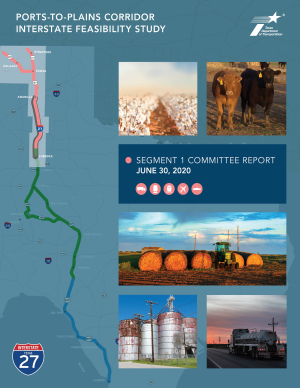 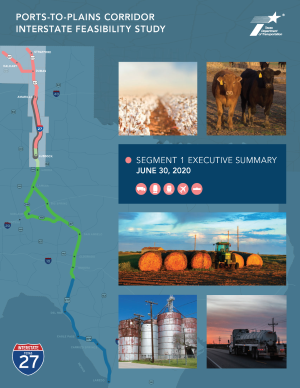
Report Executive Summary
Segment Committee #2 – Hale/Lubbock County line to Sutton/Edwards County line
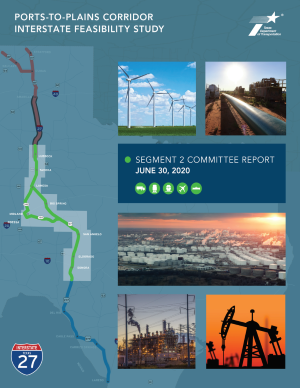 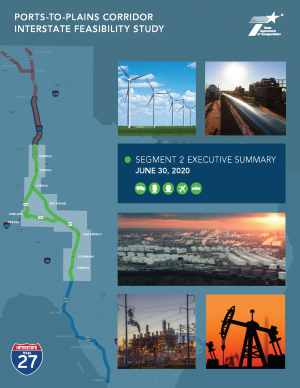
Report Executive Summary
Segment Committee #3 – Sutton/Edwards County line to I-35/Juarez-Lincoln Bridge in Laredo
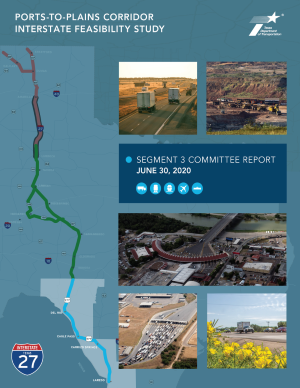 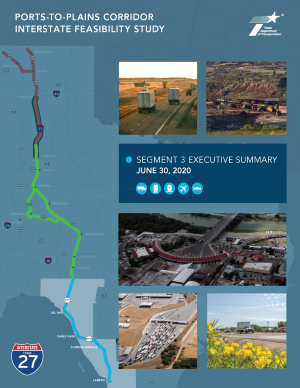
Report Executive Summary
The Advisory Committee initiated work on its Final Report that is required by HB 1079 to be submitted to TxDOT by September 30, 2020. This final report will focus on the data, impacts, findings and recommendations for the entire Corridor.
Return to contents
Virtual Washington DC Fly-in Meetings Have Started
As of date of this newsletter, the Alliance has held four Virtual Washington DC Fly-in Meetings. These virtual meetings have been held with Senator Deb Fischer (NE) and Congressman Adrian Smith (NE) who both attended. Additionally, the Alliance held virtual meetings with Senator John Thune’s (SD) and Congressman Gregory Gianforte’s (MT) transportation staff. Thank you to our partners with the Heartland Expressway Association and the Theodore Roosevelt Expressway Association for their efforts to schedule and participate in these meetings.
The focus of these virtual meetings has been on providing an update on the current status of the corridor within their area, a briefing on the Ports-to-Plains Alliance Policy Priorities for Rural Transportation, and an update on legislation to designate the corridor in Texas, New Mexico, Oklahoma and Colorado.
The main points of the Ports-to-Plains Alliance Policy Priorities for Rural Transportation are:
- Increase and Prioritize Investment in the National Highway System.
- Emphasize Connectivity
- Restore Federal Leadership
- Recognize Rural America Is Different from Urban America
- Recognize Large Rural States in the West Present Special Problems
- Prioritize Cost-Effective Solutions for Congested Corridors
More detail on these priorities are available by clicking link below:
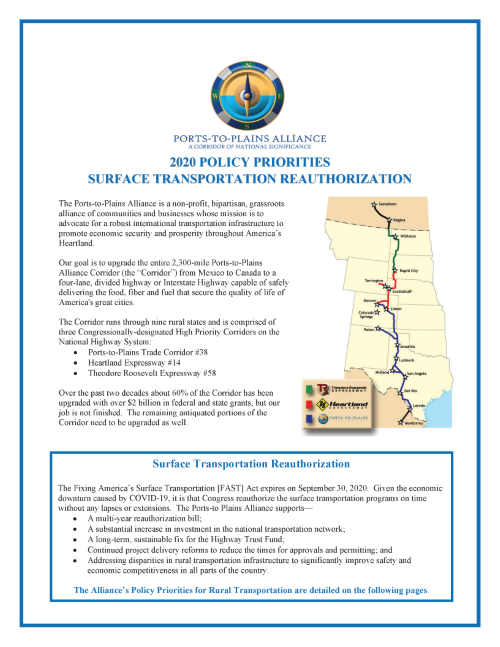
2020 POLICY PRIORITIES - SURFACE TRANSPORTATION REAUTHORIZATION
While the efforts for Future Interstate Designation are focused in Texas, New Mexico, Oklahoma and Colorado, the support of members of Congress for the designation language is important.
The Alliance will continue to schedule these Virtual Washington DC Fly-in meetings. If you have committed to participate, you will receive a calendar invitation for upcoming virtual meetings which allows you to indicate your acceptance if the day and time works within your schedule. If you have questions about these meetings, please contact Joe Kiely at 719-740-2240 or joe.kiely@portstoplains.com.
Return to contents
|